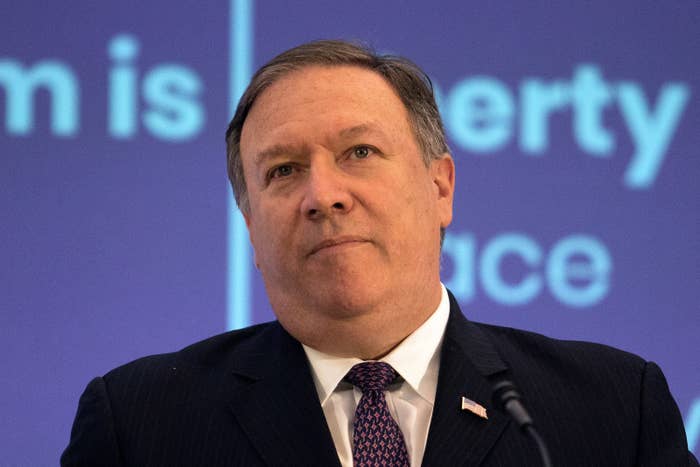
Secretary of State Mike Pompeo announced Monday that the State Department will spend $113 million to support “new US initiatives to support foundational areas of the future: digital economy, energy, and infrastructure” in the Indo-Pacific.
The announcement came as part of a speech delivered to the Indo-Pacific Business Forum at the US Chamber of Commerce on Monday. In it, Pompeo outlined his “economic vision” for the Indo-Pacific, which the Trump administration has repeatedly highlighted as a strategic region, even as it neglects to say exactly what it means.
But Pompeo’s call for the US to “deepen engagement” in the Indo-Pacific highlighted two potential problems with the administration’s economic vision for Asia. For one, it’s seemingly at odds with Trump’s trade policies. And its promise of $113 million in spending is certain to be contrasted with China’s own spending plans for its One Belt, One Road project. China has said it will spend an unprecedented $1 trillion on the project — one railway alone will cost $6 billion.
“Much of what Pompeo laid out appeared to be at odds with Trump administration positions on trade, on international affairs," said Michael Kugelman, deputy director of the Wilson Center’s Asia Program. "There is an irony in that Trump has been pushing for a pretty protectionist trade policy and he now wants to lay out this no barriers, no borders [policy] across the most populous, dynamic region.”
But it isn’t just that it’s ironic. It’s that some have difficulty seeing how, exactly, this free, open, and inclusive vision for the Indo-Pacific squares with Trump’s trade policy.
In part, that’s because Trump’s tariffs — on, for example, steel and aluminum — are hurting the very countries with which the United States, in Pompeo’s plan, would be working. India, for example, asked for an exemption from the Trump administration’s steel and aluminum tariffs, but that request was denied, and so India’s retaliatory tariffs will come into effect on Aug. 4.
“The question many in Asia have is how does this all sync up?” said Tanvi Madan, director of the India Project at the Brookings Institution.
The United States removed itself from the trade agreement that now governs much of the region — the Trans Pacific Partnership, or TPP, an Obama-era deal from which Trump promptly withdrew the US. Mexico and Japan both ratified the version of TPP that went forward without the US, and Japan has suggested it would urge other countries to do the same. Canada is nearing ratification.
“I don’t really know how these things are connected in the overall strategy. If we are not part of developing the rules of the road for this region, is our own engagement with it diminished?” asked Alyssa Ayres, former deputy assistant secretary of state for South Asia during the Obama administration. “It was as if trade lives in another universe."
But Ayres, now a senior fellow at the Council on Foreign Relations, noted another issue: The scale and scope of Pompeo’s speech was too small.
“The announcement is not in scale with what it needs to be. I’m not saying US taxpayers should be funding billions and billions of dollars… I just don’t think 113 million in these three buckets … it somehow doesn’t match up to scale of what’s happening with Belt and Road,” she said.
The United States, realistically, cannot and will not pour the same kind of money that China is into the region. Pompeo is likely correct that the US advantage will mostly come from private investment, according to Richard Rossow, the Wadhwani chair in US-India Policy Studies at the Center for Strategic and International Studies. And the United States could also, in providing infrastructure funding, consult governments in the region. “We’re not going to have a pool of money from the US to offset what China’s doing,” Rossow said.
That means the US will have to find some way to counter the Chinese spending that officials in the region can see all too easily. “It’s going to be interesting to see whether the US is going to change minds and directions, or if it doesn’t matter,” said Rossow, adding that even if the countries have a perfect understanding of US goals, “getting that port built” will remain a priority.

